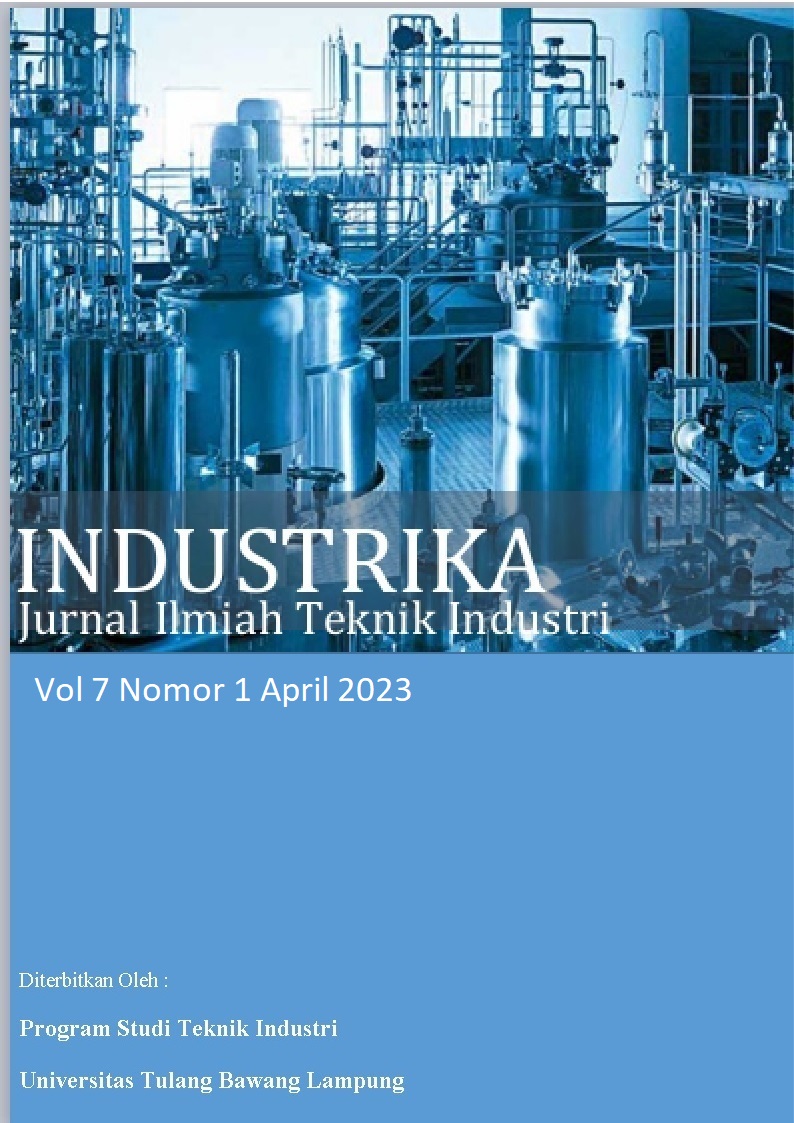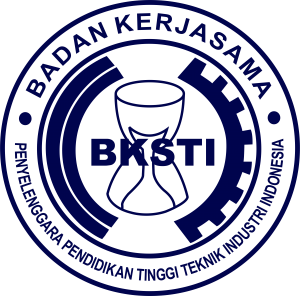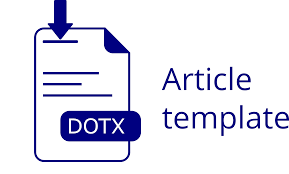Analisis Pengendalian Kualitas Produk Cap Diameter 40 White Snap On Dengan Seven Tools
Abstract
PT XYZ is a manufacturing company that produces bottle cap products such as flip top ∅40-12 white snap on, which in the production process in July and August 2022 there is a problem of the high number of reject products exceeding the regulatory limit, reaching 12.11% or 77,472 units from 640,00 units. The purpose of this study is to analyze the level of defects and find the highest factors that cause defects that occur in flip top ∅40-12 white snap on stamp products. Seven tools are methods that can be used to measure the level of defects and identify the cause of defects. The results of the analysis showed that the level of defects that occurred was not within the control limit and improvement was needed, because the proportion value moved irregularly past the UCL and LCL limits. From the analysis of the pareto diagram, the highest defect was obtained, namely black spots as many as 42,380 units with a percentage of 54.7%. Based on the fishbone diagram analysis, it was found that the causes of black spots were raw materials contaminated with dirt, selectors were not thorough and skilled, moulding was not in good condition, the use of sacks and work did not comply with SOPs, and a hot and dusty work environment.
Keywords: Degree of Disability, Fishbone Diagram, Quality Control, Reject Product, Seven Tools
Downloads
References
Abidin, A. A., Wahyudin, W., Fitriani, R., & Astuti, F. (2022). Pengendalian Kualitas Produk Roti dengan Metode Seven Tools di UMKM Anni Bakery and Cake. Performa: Media Ilmiah Teknik Industri, 21(1), 52. https://doi.org/10.20961/performa.21.1.53700
Dr. Hana Catur Wahyuni ST., M., & Wiwik Sulistiyowati ST., M. (2020). Buku Ajar Pengendalian Kualitas Industri.
Erdhianto, Y. (2021). Analisa Pengendalian Kualitas untuk Mengurangi Jumlah Cacat pada Kemasan Produk Gula Pasir PG Kremboong dengan Metode Seven Tools. Seminar Nasional Teknologi Industri Berkelanjutan I (SENASTITAN I), 1(1), 349–357. Retrieved from https://ejurnal.itats.ac.id/senastitan/article/view/1644
Hariyanto, M. A. (2017). Pengendalian Kualitas Produk Roti Tawar “ Della ” Menggunakan Metode Statistical Process Control. Simki-Economic, 01(05), 3.
Matondang, T. P., & Ulkhaq, M. M. (2018). Aplikasi Seven Tools untuk Mengurangi Cacat Produk White Body pada Mesin Roller. Jurnal Sistem Dan Manajemen Industri, 2(2), 59. https://doi.org/10.30656/jsmi.v2i2.681
Prasetyo, R., & Bakhti, Y. K. (2022). Pengendalian Kualitas Produk Pakaian Anak Pada Industri Garment Dengan Metode Seven Tools. Jurnal Inkofar, 6(1), 39–51. https://doi.org/10.46846/jurnalinkofar.v6i1.210
Puzianti, S. A., Pujianto, T., & Kastaman, R. (2022). Analisis Mutu Produk Pengolahan Hasil Pertanian: Fruit Strips Frutivez dengan Statistical Process Control. Agrikultura, 32(3), 275. https://doi.org/10.24198/agrikultura.v32i3.35714
Rofieq, M., & Septiari, R. (2021). Penerapan Seven Tools Dalam Pengendalian Kualitas Botol Plastik Kemasan 60 Ml. Journal of Industrial View, 3(1), 23–34. https://doi.org/10.26905/jiv.v3i1.5720
Salangka, A. H., Palandeng, I. D., Karuntu, M. M., Pengendalian, A., Produk, K., Ud, P., … Ratulangi, U. S. (2022). DI DESA KINNALI KECAMATAN KAWANGKOAN ANALYSIS OF PRODUCT QUALITY CONTROL AT UD . TARSIUS IN KINNALI VILLAGE KAWANGKOAN DISTRICT Oleh : Jurusan Manajemen , Fakultas Ekonomi dan Binsis Jurnal EMBA Vol . 10 No . 4Oktober 2022 , Hal . 813-825. 10(4), 813–825.
Sutjipto, W., Widjaja, S. B., & Setyawan, A. B. (2019). Penerapan Siklus Pdca Pada Cv. Delima Dengan Alat Bantu Seven Tools. Calyptra: Jurnal Ilmiah Mahasiswa Universitas Surabaya, 7(2), 2782–2797.
Tobing, B. (2018). Jl. Pulau Tanah Masa 2, Kawasan Industri Medan Tahap II Desa Saentis, Kec. Percut Sei Tuan, Kab. Deli Serdang 20371. In PT. Medan Sugar Industry.
Wisnubroto, P., Oesman, T. I., & Kusniawan, W. (2018). Pengendalian Kualitas Terhadap Produk Cacat Menggunakan Metode Seven Tool Guna Meningkatkan Produktivitas di CV. Madani Plast Solo. IEJST (Industrial Engineering Journal of The University of Sarjanawiyata Tamansiswa), 2(2), 82–91.
Downloads
Published
Issue
Section
License

This work is licensed under a Creative Commons Attribution-ShareAlike 4.0 International License.









